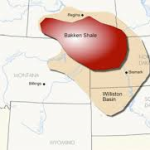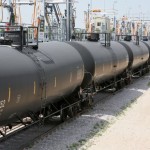Rail Cars, Energy Independence, and American Entrepreneurship

Robert Menard
Certified Purchasing Professional,
Certified Professional Purchasing Consultant, Certified Green Purchasing Professional, Certified Professional Purchasing Manager
Editor’s Note: A September post extoled the value of the Keystone XL Pipeline . Since this interconnected economic world never operates in a vacuum, we will examine some of the predictable consequences of our decisions as Americans.
In 2010, the business genius Warren Buffet, the Oracle of Omaha, made a major investment in Burlington Northern Santa Fe Railways (BNSF). According to InvestmentU.com, Buffet foresaw the expansion of rail demand Buffett and slowly and built his stock in BNSF since 2006 until he bought full control.
Why did Buffet choose the railroad?
Prior to his investment, the rail industry had seen its overall volumes decrease. And most considered railroads behind the times, slow innovators, and in an industry that had little power to increase profit margins.
There are 150,000 miles of track in the United States. As an industry, it generates around $40 billion in annual revenues. Railroads transport most of the nation’s coal, which provides more than half of the nation’s electricity. But as energy demand shifts away from coal and toward oil & gas, Buffet saw the opportunity for a major railroad investment.
Trains are an extremely efficient form of transportation for high bulk commodities such as grain, automobiles, sand & gravel, and cement, to cite a few. Popular radio ads tout the statistic that one gallon of fuel is enough to power one ton of freight for more than 400 miles. Just one standard railcar holds up to 100 tons of freight, the equivalent of four standard tractor-trailers. Rail is so efficient, that many trucking companies use rail, so called “intermodal” freight. UPS and FedEx are two of the rail industry’s largest customers.
In the U.S., coal has lost its luster, due in part to crushing environmental overregulation, but it is in voracious demand overseas to fuel the Asian economies, particularly India and China. The U.S. Department of Transportation predicts freight rail tonnage will increase 90% by 2035. New track, facilities, terminals and tunnels totaling $10 billion in capital improvements are under construction.  The greatest demand for rail cars is concentrated around the oil & gas fields of the Bakken Formation, principally in North Dakota, Montana, and Saskatchewan.
The greatest demand for rail cars is concentrated around the oil & gas fields of the Bakken Formation, principally in North Dakota, Montana, and Saskatchewan.
The demand is so great that the International Business Times reported in an August 28, 2014 story, “The increase reflects rising U.S. crude oil production, which hit about 8.5 million barrels a day in June for the first time since July 1986.”
The story further noted that crude oil has consumed a higher number of rail cars from January through July 2014. “More than half of the nearly 460,000 rail carloads moving petroleum liquids were carrying crude, up from around 3 percent in 2009, according to the Association of American Railroads.”
With inadequate pipeline capacity, the burden falls to railroads to move petroleum products. The proposed Canada-to-Texas Keystone XL could alleviate some of that glut, but the fringe so-called environmentalist movements and allies in the Obama administration are frustrating all efforts to build this essential pipeline. Pipeline is the most efficient and safest mode of oil & gas products. But, about 70% of the 1 million plus barrels per day of oil produced in North Dakota is transported year to date in 2014, according to the North Dakota Pipeline Authority.
 Rail transportation of petroleum products is not without risks. Derailments and serious accidents have caused major environmental damage and deaths. In July 2013, an oil train in Lac-Megantic, Quebec, exploded and killed 47 people. The U.S. Department of Transportation has proposed new safety rules that would phase out older railcars and replace them with less vulnerable units, as well as reducing operating speeds and upgrading braking systems.
Rail transportation of petroleum products is not without risks. Derailments and serious accidents have caused major environmental damage and deaths. In July 2013, an oil train in Lac-Megantic, Quebec, exploded and killed 47 people. The U.S. Department of Transportation has proposed new safety rules that would phase out older railcars and replace them with less vulnerable units, as well as reducing operating speeds and upgrading braking systems.
Consequential damages
The growth in crude production and subsequent “sidetracking” of rail railcars is negatively impacting other sectors of the economy, particularly in the upper mid-west region. Farmers claim that grain shipments have been held up by oil, leading to lost revenue and profitability and reduced production amongst major players in the food industry. Agricultural officials said they are worried that record crops of wheat and soybeans this month will be left to rot on the farms.
Just build the damn Keystone XL Pipeline!